Greetings from Santo Domingo, Ecuador! I'm glad to share an update of what is happening here, so here goes …. At the end of May there was a meeting of the local priests and laity in the diocese with the bishop. This time around it was the job of our parish here, Julio Moreno Espinoza, to host. We went to what is called a balneario, which is a day resort - of which there are many here - to host. There was a presentation by Padre David on a theme related to the life of the diocese, as well as some discussion, then a meal. There was a lot of preparation work, and at the end of the day it was good to wrap up. All in all, it was a good chance to get together for a little while.
Visiting Agnus Dei
Each week I've been trying to get out to a place of prayer, sometimes discovering new places, but often returning to Agnus Dei, which is an enclosed community on the edge of the city of Santo Domingo where there is a silence and exposition of Jesus in the Blessed Sacrament all day. One of the members of the community was showing me this stream, which passes through a little waterfall. He showers here in the waterfall every so often. The water comes from a spring at an elevation a little further up. It's so clean that they use it for drinking water, adding only a little ozone to purify it.
As a deer longs for flowing streams, so my soul longs for you, O God. My soul thirsts for God, for the living God. (Ps 42:1-2)
Visit to the Museum of the Tsáchilas
The parish has a seminarian, Franklin, who stays on weekends. On one day, he and I and Darwin, a local man who plays some of the music, visited a local museum dedicated to the Tsáchilas people.
You can listen to our guide play one of the musical instruments, it's pretty cool. It's like a xylophone, with each note produced by striking a bamboo slat, that moves the air down through a bamboo tube. Different sizes of tubes produce different notes:
https://www.youtube.com/watch?v=IWT4AGbahJA
We got to play a little as well:
This is the medicine man's tent:
And this little sauna hut is a place where herbal steam calms the nerves:
And got to take a try at hurling one of the native spears - I almost broke the pole:
Our guide was very friendly and humble. The Tsáchilas tribe is indigenous to this location in Ecuador, and is a peacable tribe (no danger of losing your head, phew). In fact, the whole province (an equivalent of our US state) is called Santo Domingo de los Tsáchilas. They are a big reason that the city of Santo Domingo has become the 3rd largest city in Ecuador, and has experienced such tremendous growth (in the 1990's, it was at one point the fastest growing city in Latin America.) It was their trade that started to attract local businesses.
Now, their culture is endangered. Most Tsáchilas have abandoned their traditional dress and have adopted modern dress and are adopting modernized customs, even when they still live in their villages. The cultural dress is used for special occasions, though. They are constantly looking for support from the outside, not only for their culture, but also for sustenance. The government supported a project nearby (now I forget if it was a farming project, or mining, or what) that contaminated their river. The fish that they had subsisted on began to die off. So, they are looking for support for their own sustenance, and this museum, as well as other tourist-centered activities, help to support them. Our guide was even going to Philadelphia for a conference of some sort!
The hair of the men is shaved on the sides and back. The hair on top is matted down and molded into a flat, oval shape using paste from grinding the achiote seed, and the oval shape of the hair is meant to be the shape of an achiote seed pod. This hair style is done out of gratitude to the achiote plant. Some time ago, when the men had long hair, the whole tribie was struck by smallpox. They were led by a shaman to the achiote plant for a cure, and after they rubbed their bodies down with the red juice from the achiote seeds, the epidemic was overcome. Since then, they have expressed their thanks to the achiote plant through their hairstyling. You can read more about the Tsáchilas here: http://en.wikipedia.org/wiki/Tsáchila_people.
It was a great experience to be with our guide, to see the actual practices and cultural elements of the tribe, and especially how they continually thank the achiote - and in reality God - for the salvation they received. Give thanks to the Lord, for he is good; for his mercy endures forever! (Psalm 107)
Pentecost
On the day of Pentecost, I was moved to take this picture of a young girls praying before the Blessed Sacrament. Because of the simplicity in it. "Let the children come to me, and do not hinder them; for to such belongs the kingdom of heaven." (Mt 19:14)
Nieves
Nieves is a beautiful 14-year-old girl who lives in Puerto Quito with her mother and sisters and nieces and nephews and other family members. She, like her two sisters, has skeletal deformities (I'm not sure what the technical name for the disease is) that have made her short in height and malformed in her limbs. I met her as part of the program for the disabled Amigos del Arca. She is in the picture in the bottom right, next to her sister Maria. You can see that her left leg is particularly badly formed. Sr Josefina helped her to get to the hospital and begin treatment for the disability, and this included a re-setting of her left leg bones. In the process, a mechanism of steel rods and rings was screwed into her leg bones to control the movement and placement. Her leg looked like a large erector-set construction project.
Back about six months ago, when I was living in Puerto Quito, I helped to bring her to the hospital for a checkup. Because we couldn't find a driver and I didn't yet have my driver's license, we had to take a bus. That meant that my role was to carry Nieves wherever she needed to be carried. But I was glad to do it. My sister was severely disabled, and I witnessed my mother carry my sister for innumerable hours, and I myself learned how to pick up my sister and carry her with great care and gentleness. I was prepared for this.
It started early in the morning, as I picked her up out of her bed. First, I asked her where to put my hands, what was the best position and location for lifting. She was familiar already with what worked and what didn't. I went very slowly and gently, and it seemed to be the right spot, everything seemed to be painless and she was comfortable. So I lifted her and carried her from the house down a flight of stairs to the car. We drove to the bus stop, where I carried her out of the car and, just barely squeezing through the doorway with the projecting metal rods, carried her to her own double-seat on the 6am bus. This particular bus began its route at our stop, so there were few people onboard, allowing us to get her a double seat all to herself.
So, off we went on the 4-hour bus ride to Quito. When we finally arrived at the bus terminal, I carried Nieves off the bus down the stairs to get to a bench, where I put her down to rest. We had to get a cab to the hospital, so I lifted her off the bench and tried to place her in the cab. This was the most difficult part, because it was hard to get a good placement of my hands while guiding her into the back seat of the cab, and I knew it hurt her. She was never comfortable in the cab. So, we drove to the hospital, and I had to transfer her out of the cab, which was also painful for her. Then, I carried her up a driveway and into the hospital, and from there we found an elevator and waited for a bit. We caught the elevator and then walked for a while looking for w waiting area. By this time, my arms felt like jelly, but somehow we kept going. When we finally got to a waiting area, I was able to rest my arms a bit. Apparently, there are no wheelchairs or beds available for transporting in the hospital, but Sr Josefina was able to go up to another floor and bring down a rolling metal table. With a blanket added, it became something for transport. We waited a while for the staff to take her in for an x-ray, which we completed. After that, we were able to roll the table to another floor and wait for the doctor's visit.
Seeing it would be a while, I left to take care of some details for getting a driver's license. When I returned, she had seen the doctor, everything was OK, and we planned on leaving. I rolled the cart to the door as Sr Josefina flagged down a cab. I lifted her up and carried her down the driveway to the cab, and we went through the same painful process to get her into the back seat. It was even more painful this time around, which was tough to experience. We took the cab to the bus terminal, where again I transferred her out of the cab and into my arms. We walked around a while looking for a place to rest that was out of the cool wind that was now blowing (Quito later in the day can get cold). Finally, we found a bench and I laid her on the bench while at the same time trying to provide some cover from the sun. By now, my arms were softer than jelly. So, we scoped out some food, and then, after waiting for over a half an hour, the bus arrived. So I lifted her up again and carried her around a long corner, up a driveway to the bus. Again, I had to squeeze through the entranceway with her metal rods protruding out, until we made it to a seat. We got settled in, and began the 4-hour bus ride back to Puerto Quito. Outside of some seat readjusting, the bus ride went smoothly.
When we got to Puerto Quito, again I lifted her out of the seat and we squeezed off the bus, climbing slowly down the stairs. We found a bench nearby at the bus stop, and I was able to place her there, with a pillow. Another sister came by with the jeep, and again I lifted up Nieves and placed her in the back, comfortably on seat on the ground, where there would be the most stability and comfort and room. We set off to her house, and when we got there, again I carried her out of the jeep and into her house, finally arriving at her bed. At last, I laid her down in her own bed. My arms at that point were practically numb, ready to fall off. But it was all worth it, especially after a smile and hug, and seeing her happy and comfortable to be in her own bed.
I'm sharing this now because Nieves had her rods taken out recently and a new cast was put on! On the same day that she returned from the hospital in Quito, I was visiting Puerto Quito, and was able to visit her at her new home. (The family has a new, recently-built home, with a few rooms and a floor.) Finally, we were able to get a photo, and I include it here. Nieves is in blue in the middle, next to her sister Maria. Her Mom is on the far left, and her sister Mercedes, who also has muscular-skeletal problems, is on the far right.
As I mentioned, my mother used to carry my sister everywhere. I got to experience a little bit of what my mother did every day. And even more, it was my mother who was close with me in the whole experience. My coming to Ecuador is something I do with my mother, and we share in the life and ministry here. What was coming to my mind after all this was the song that I sang several times with my mother on her bed as she was in her last few days. As we faced Jesus in the large Divine Mercy image at the foot of her bed, as we rocked back and forth, in between her vomiting, we sang the song Lord When You Came To The Seashore. The refrain, which to me has always pointed to my coming to Ecuador with - in a mysterious way - my mother, goes: "O Lord, in my eyes you were gazing, Kindly smiling, my name you were saying; All I treasured, I have left on the sand there; Close to you, I will find other seas." But, as I thought of all the lifting and carrying I did for Nieves, from rural Puerto Quito to Quito the big city, what was strongly coming to my mind were the last two prophetic lines of this beautiful and powerful song that we sang together back in August of 2008:
Lord, have you need of my labor, hands for service, a heart made for loving, my arms for lifting the poor and broken? Lord, send me where you would have me, to a village, or heart of the city; I will remember that you are with me.
I do remember.
Vows Renewal
There is a small community of 3 sisters living here in the school, members of the congregation Sisters of Charity of the Immaculate Conception from Ivrea, Italy. One of the sisters, Sr Carmen, is still in formation, and renewed her temporary profession of vows within the Mass. It was a happy time, and we all enjoyed some food afterwards together.
I will pay my vows to the LORD in the presence of all his people. (Ps 116:14)
Catechist Meeting
One day each month, all of the catechists go to one of the villages for some renewal and fellowship and a small meal. This month we visited the village Acapulco, which happens to be one of the most distant villages. It was a very social day:
My own suggestion was to start including discussion about resources for the catechists: materials, courses, pedagogical tips, guides and books that will help them in their work. In the next meeting, I'm scheduled to lead a discussion about that.
"Come away by yourselves to a lonely place." (Mk 6:31)
************
Chontal Visit
On June 18, I was able to make the trip to Chontal. I had made the hour and a half trip to Puerto Quito the day before, and then it took another 4 and a half hours to reach Chontal the next day. On the way, I was able to take some video of the mountains that surround the village. I had taken some of the same video on my turn the time before, and was able to match up the similar segments from each video, to see the difference in the mountain. The picture is below. What you don't see to the right is a large split in the mountain, where there was a landslide that took out a home and covered the roadway to the river. What a difference you can see in the trees that fell from the mountain in the landslides.
When I arrived, the people were preparing for the fiestas. As I was walking down the street, I was invited to a sneak-preview of some of the ornaments for one of the "floats" in the parade. (More on that later.) These swans were made by hand from pages from magazines that are folded up into little triangles and then interleaved to form the shape. Spray paint not only colors the swan, but also solidifies everything together. It took a lot of time from a number of folks to put them together!
At the same time, I was able to take a few tours of a few of the areas where homes were affected, as well as walk a bit up the mountain.
This is the back of the home of Maria Belen and her mother Susana (the place is also a restaurant). These were guest rooms, the one at the forefront was a room that I had stayed in at one time. These rooms were entirely filled with mud, as was as a giant boulder. Apparently, on the night of the landslides, there was a guest, a man, staying in one of the rooms on the second floor. No one apparently told him what was going, and he spent the whole night in his room! Talk about being inches from death…
The house of Fernando and Jimena and their two children is shown here. Trees and mud had collapsed on the roof of Fernando's workshop (this was 2 weeks after the 3 motors that run his carpentry equipment - and his livelihood - were stolen; and there's no insurance). The mud had come to the back wall of the house. The mountain doesn't look too good.
But take a look from the back view and you can see how barely a bigger catastrophe was averted. You can see the mud marks on the house and how the landslide stopped feet from the house:
I took up a walk up the road to visit the river Chontal, which was a pure water river that the folks would sometimes bathe in and clean clothes. It is also a sort of remote place I liked to come to to pray. On the way, I took a look down at the Rio Guayabamba, which merges there with the Rio Chontal, and you could see one of the leftover trees there:
The river itself had so much debris from landslides nearby, that the course of the river had changed, and the natural pool that had been constructed was wiped out:
I got a tour of the village school from Katy, who is one of Fernando's daughters. You can see the mud line on the side of the classroom here, showing how the mud had piled up. Several of the classrooms were flooded with mud.
This giant boulder stopped just short of the school:
There are classrooms for effectively grades 1 through 9. But as you can see, some of the classrooms are shared. How would you like to be teaching in these classrooms - man!
We stopped to say hello to Loris, who is the school mascot. Loris is a parrot who can speak a few words, and who, as you can see, loves sunflower seeds. I had a blast with the parrot. Loris doesn't stray away, surprisingly (or not so surprisingly, if she's fed well.) She was one of the main attractions on one of the "floats" in the parade.
https://www.youtube.com/watch?v=trlf63hdCCo
I got to meet with the president of the broader community (called Garcia Moreno), Shisela Morales; as well as with Don Ramiro Nogales, a prominent, long-time resident of Chontal who I usually stay with; Fr. Marcelo, the local priest; and men from 7 of the families most affected by the landslides. We had a meeting for about an hour and a half, if I remember, and in the meeting everyone came to agreement on how to divide the money that was given through the gofundme campaign. We had raised in total $12,000, and it worked out really well for each family involved. The cost of a home from scratch is about $4K or so, including the land and the labor and materials. What is helping is that here and there, there are other resources that each family is getting access to, and the donations are helping with different things in each case. Each family is allotted a certain amount (different in each case, through discussion in the meeting) in order to identify the materials and labor they want to have procured. In some cases, it's a bathroom and a roof, in other cases it's cement blocks, in other cases it's wood for house. In one case, it's to buy an electric motor for wood-working tools that was stolen the week before, and to add a roof. Some are rebuilding in place, others have new spots. Where we stand now as of this writing, is that the check is being cashed. After that is done, all the materials will be bought together. When it's time for delivery, we all get together and I think there will be some sort of ceremony, though I'm not too sure. It's my first time around with these things here, and no matter how much you think you know what is going to happen - well, you have to open to new things, let's put it that way.
In all of this, you can see the hand of God. There was someone who was sent to bring about a certain coming together of people before Jesus came. John the Baptist's mission was to come in the spirit of Elijah the prophet, to "turn the hearts of the fathers to the children, and the disobedient to the wisdom of the just, to make ready for the Lord a people prepared." (Lk 1:17) He told the people, "He who has two coats, let him share with him who has none; and he who has food, let him do likewise," (Lk 3:11) so that "every valley shall be filled, and every mountain and hill shall be brought low." (Lk 3:5) The mission of John the Baptist was to transform barriers to bridges, to prepare the way of Jesus. You can see it happening here…
The fiestas began with the school parade down the main street. I don't any kid over the age of 11 actually likes marching in a parade in hot sun in a uniform.
https://www.youtube.com/watch?v=URSYdSZLR5w
After the assembly and speech and the initial stuff, the kids all returned to a few tiendas on the street where some food and drinks were served. In that time, I was meeting some of the schoolteachers, and a professional-looking salesman came up with a large suitcase. He was selling books and DVDs related to sex ed. So there were the teachers, in the middle of the street, with all the kids hanging around, digging through sex-ed books with all that is private on display. It was the strangest thing. You'd think the salesman could wait for another moment to whip out resources for sex-ed classes than the opening parade of the fiestas. As I think we all can sense intuitively, sexual education is at a different level of importance and intimacy than the academic subjects of math or history or even health, and it needs a space that's commensurate with that to not do violence to that reality. Otherwise, people lose that recognition of the dignity of human sexuality and are prone to abuse it. But so it was. I think he could tell that I wasn't too happy, but there wasn't much I could do but invite others to come and get something to eat … I thought of the Lord's words, "Whoever scandalizes one of these little ones who believe in me, it would be better for him to have a great millstone fastened round his neck and to be drowned in the depth of the sea. Woe to the world for temptations to sin! For it is necessary that temptations come, but woe to the man by whom the temptation comes!" (Mt 18:6-7) We all need the Lord's grace!
One of the highlights of the fiestas was the procession of carros alegóricos, or floats, in the little parade. Each car is decorated with a theme to it, a theme that is pertinent to the village. It includes a lot of symbolism, as well as representative dancers that perform after the parade, when everyone is gathered together. Normally, there is only one car for the town for the fiestas, but this year they had four different teams to have more people involved and have something bigger, to bring people together more.
Included are pictures of the different cars and the teams associated with each of them, and a video of the parade. One of the cars has a live parrot, whom you've already met. There's also a videos of parts of the dances:
https://www.youtube.com/watch?v=vKdEgS39vPk
https://www.youtube.com/watch?v=oQlSqdvJt0w
There was also the election of the beauty queen, as always at the fiestas. Being at night, I only got a few short videos in to share. The girls are young, between 14 and 16 years old. I think that there are not many candidates in the 18 - 22 range because many leave the village for school, or if they stay, they have families and kids ….
https://www.youtube.com/watch?v=DsfAOfWIsdA
There was also a show of horses down the main street. It felt like I was in the wild west:
https://www.youtube.com/watch?v=ibiYXjhz1gA
On the second night, Saturday, we waited for the "main event", which was a concert by the singer Americo Ecuatoriano. There is a popular singer in Latin America, a Chilean known as Americo. There's also a hugely popular talent program on TV down here where Ecuadorians with talent impersonate famous singers of all types, and this particular singer reached the finals of the TV program impersonating Americo (thus the name, Americo Ecuatoriano). The big news around Chontal was that he was coming to sing for the fiestas. This was setup even before the disaster. This was a banner that was made up, showing him as the main event.
And I had started a running joke that, in fact, he was not coming, and that *I* was Americo. I was going to sing at the main event. Well, the night wore on and everyone was waiting, and I was starting to think that I might have to actually sing. We would have a copy of a copy of the original artist (not too uncommon here). Seriously, I worried a bit that the guy would stand the village up, and that wouldn't be good for the mood. But at about midnight, he showed up, and everyone was happy. Because Chontal has a large field, the fiestas here attract more visitors than the fiestas in the other villages, and there was a pretty large crowd, relatively speaking.
The great part was that, at one point, Maria Belen and her friend Antony were brought up on stage to dance and sing with Americo Ecuatoriano. They got almost 10 minutes up there dancing and singing with Americo - great stuff!:
https://www.youtube.com/watch?v=DICK2JHwJwg
And that wrapped up the fiestas!
Corpus Christi
Padre Marcelo came for Mass on the feast of Corpus Christi, and we had a Eucharistic procession after the Mass. We walked through the streets of the village, and stopped at about 7 different homes who had set up homemade altars outside. We kneeled in adoration of Jesus in the Blessed Sacrament for a few prayers at each house. It was powerful to do as a sort of healing for the village:
https://www.youtube.com/watch?v=8mWhiar0UTg
Mission of Divine Mercy
On the last two days I was in Chontal, I began to visit some homes in the daytime. In the evening, we opened the church for a short talk on God's Mercy and the devotion to the Divine Mercy. After the short talk, we had about 15 minutes of Eucharistic Adoration, including the praying of the Divine Mercy chaplet. Each night we had a handful of people. But for me, most importantly, I had the chance for the first time to both preach and teach a bit, as well as have exposition of the Eucharist in silence, so that each person could be alone with Jesus. Although we didn't have many people this time, it was a huge step in my mind. One, because of Eucharistic adoration. This is a key to the prayer life of so many people, and there is no opportunity for the people here. The priest is in and out for the Mass, and there is no one local who can expose the Blessed Sacrament. But even more, whenever there is exposition, the time is filled with vocal prayers of some sort that everyone is expected to join into. I find that it turns prayer with Jesus into something mechanical and obligatory and impersonal, and it drives people away from Jesus and the church. But the way I do it is different. I'm hoping that when I do go there, I can open the church for an hour each night in silence, where people can come and go as they please, and let the attraction of Jesus draw them in their hearts… And the second reason is that the people in these ways come to encounter me more in my pastoral mission here, as opposed to being a benefactor and friend. They can come to know me better. And, both of these aspects touch on some of the real sources of how I - and my Mom's spirit - came to be there in the first place. The Divine Mercy devotion, adoration of the Eucharist, and proclaiming the Word, are all at the roots of how this relationship between me, my Mom, and Chontal came to be …
On my last day there, I visited the center Garcia Moreno, which is about an hour bus trip from Chontal. In the past, when Padre Julian was the local priest, this town center was the mother-seat of all the villages, including Chontal. Now, this has been divided in the church, but politically it is still the mother seat (thus my working with Shisela Morales, who is the president of the whole area Garcia Moreno). This time I went to visit a friend I met my very first time here with Padre Julian - Christian. He now has a woman in his life and a newborn son, and he invited me to eat. Also invited were the local priest and another priest who was filling in for Pd Marcelo (the local priest in Chontal) while he had headed off for a retreat. It was good to catch up a bit with Christian and meet his new lady and his son, as well as the priests for the first time.
I'll share a few things about my time there. After we ate, I was standing with the guys outside of Christian's house, at the main plaza. A man came up to me and told us that the president wants to meet with me. I followed him to the office and met with her assistant. We worked for over an hour trying to work out issues related to banks and whatnot to facilitate the transfer of money. But it was amazing that she really needed to meet with me, and happened to look out the window and see me there in Garcia Moreno. It said to me that God was really working here, and really wanted this to happen! …
I want to express something about the poverty and machismo that is here, by sharing some aspects of my time with Christian and his woman and the priests. When we came in to eat, the woman, Mayra, had cooked the meal. All the men sat down at the table - of course I took whatever was offered me as a guest - and we began to have discussion as Mayra served. I noticed that she never took a seat at the table, and was never included in the conversation, so every once in a while I'd direct something over to her. At the end, she was left to do all the cleanup, and the men, including the two priests, went outside to go and play volleyball. It was then that I was summoned to meet with the president. When I came back, the guys were all watching and playing volleyball, and Mayra was a distance away at the doorway to her home, with her son. So, I went over and sat with her, away from the men.
We talked a little bit, other children came over to play with the baby, simple things like that. At one point, there was a ball with different animals on it. She was using it with her son, and at one point began to explain the animals to him. Where there was a zebra, she said, "horse." When there was a lion, she said, "dog." It occurred to me that she didn't know those animals pictured on the ball. She only knew the animals she had encountered in her life. After her man had finished playing, he was walking at a distance with the other guys, and there was Mayra saying to her son, "There's daddy, there goes daddy - see daddy." He never even so much as looked over.
Here was a pretty young woman, in a relationship without the security of commitment (without marriage), uneducated, serving her husband and the men without real participation in return, left with the cleanup of their mess as they go and play, and without recognition as an important person. It broke my heart. And yet this is common here. A poverty of the recognition of the dignity of the person, most easily expressed in this machismo effect toward the woman. If someone had offered her something different, she probably would not accept anything better, at least not yet. For her, with her poverty and dependency habits, it is a better life than the other options she knows. She has never witnessed a more secure condition, and so if you suggested something different, she would probably defend her condition.
She doesn't know her own dignity.
For now, at least.
But that is the gift and privilege of being a missionary, of being someone from far away who comes from the land of plenty, who has chosen to leave it all and come to that very person you are present to. Simply by loving persons, giving them the time, attention, presence, and listening care, you get to the root of the whole thing:
She is incredibly important. She has a dignity.
She is a daughter of God.
"The poor deserve preferential attention, whatever their moral or personal situation. They have been made in the image and likeness of God to be his children, but this image has been obscured and even violated. For this reason, God has become their defender and loves them. It follows that the poor are those to whom the mission is first addressed, and their evangelization is par excellence the sign and proof of the mission of Jesus." (Mission of the Redeemer, St John Paul II)
Special Olympics in Pedro Vicente Maldonado
Last week, I visited Pedro Vicente Maldonado for the Special Olympics. I had been there last year, and took some photos and videos, ad put it all together into one video. People really liked it, so I'm hoping to do it again with the videos and photos I took. I'll post it here when it's done.
School English Club at Santiago Apostol
Right now, the English Club is on hold as the school decides what it is going to do in this school year. There is a new requirement for clubs in the grammar through junior high school years, and the principal has asked Fr. Martin to lead that. They asked me to be a sort of secretary to him, and I politely declined. In the freshman to junior high school years, there's a requirement for certain after-school programs, which makes optional groups difficult to organize. I was offered to gather any senior-level students who were interested in English and work on a presentation for the open house that is in September. Right now, sadly, it doesn't seem like the English Group from last year is too high on the priority list, and any activity we could do seems to be limited. It is a sad situation, because the school is in dire need of funds and, and the English group has shown that it can build bridges to other institutions and exercise and display the potential of the students beyond the classroom - all of which fulfills almost exactly the stated mission of the school. But it also requires an open spirit of service to the students, a spirit different from the current culture in the school. I believe that therein lies the conflict with those who make those decisions …
Our little English group, because of the example it gave of the possibilities that can be reached with such a spirit of trust in the youth, was, I believe, a prophetic group for the school. It was clearly a different approach and philosophy, one that is based on confidence in the potential of the students rather than the fear of failure and punishment that often motivates students in school. But we know what happens to prophets among the People of God. "O Jerusalem, Jerusalem, killing the prophets and stoning those who are sent to you!" (Mt 23:37)
Divine Mercy Apostolate in Santo Domingo
There are tentative plans to go to the World Conference on Mercy in Colombia in August, I'll keep posted as it develops. There may be a small group from Ecuador going, and I've been in contact with the group coming from the Marians of the Immaculate Conception. So we'll see if a connection can be made …. "That they all may be one." (Jn 17:21)
Preaching the Word
A great joy of mine has been the opportunity in the early weeks, when Padre David was away, of going to the villages and leading and preaching in liturgies of the Word. This always seems to be a special and important part of my time here in Ecuador.
"The Spirit of the Lord is upon me, because he has anointed me to preach good news to the poor. He has sent me to proclaim release to the captives and recovering of sight to the blind, to set at liberty those who are oppressed, to proclaim the acceptable year of the Lord." (Lk 4:18-19)




















































